
Chainlink is one of the best-performing altcoins of 2019. There are plenty of reasons for its surge in popularity and price, all of them grounded in solid fundamentals and growing partnerships with tech giants.
With the intention of serving as a bridge between different platforms and blockchains for smart contracts, Chainlink was established. Due to their extreme flexibility, smart contracts quickly caught the interest of both investors and crypto enthusiasts.
If you bought some LINK coins and plan to hodl them for a longer period of time, move them away from crypto exchanges and store them on your own wallet.
Since LINK is an ERC20 token that deploys on-chain contracts the Ethereum blockchain, , so you’ll need to look for a wallet that supports these tokens, and there is a plenty of options that do so. All of the crypto wallets listed below support storing Ether (ETH) as well as any ERC20 token.
Here is a comprehensive list of LINK wallet options you have at your disposal for safely keeping your coins.
What you'll learn 👉
Best Wallet for Chainlink – Where to store Chainlink?
Best and safest option to store your coins is to download an official coin wallet and connect it with a hardware wallet (if it is supported) – our recommendation is just go and buy Ledger Nano S or X or Trezor Wallet or KeepKey, those are the safest options.
Ledger Nano S Chainlink Hardware Wallet – Safest option
Ledger Nano S is a hardware wallet from a French start-up that is designed for users who want increased security.
It’s like a USB drive that connects to any USB port and acts as another source of protection. Nano S only starts up when plugged into a computer (or mobile device) because it doesn’t have a battery.
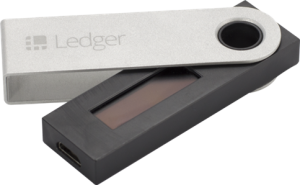
This wallet doesn’t come with an anti-tampering sticker. The reason for that is that its cryptographic procedure checks for the integrity of the instrument when powered on.
The Ledger also comes with two side buttons for confirming transactions and an OLED screen. The Nano S comes at a very competitive price and is one of the cheapest multi-currency hardware wallets. Read our full Ledger Nano S review here.
When you configure your Ledger as a new device, you have to set up your pin code to secure your wallet. After that, note down your 24-word recovery phrase and store it in a safe place. You can use this recovery phrase anytime to restore your Bitcoins.
With this wallet, you need not worry about the safety of your coins because your private keys are stored offline. You can use the Nano S on any computer or Android phone with GreenBits or Mycelium.
The current list of Ledger-supported cryptocurrencies:
- BTC – Bitcoin
- ETH – Ethereum (Wonder what is the best wallet for ethereum? Click here to find out.)
- ETC – Ethereum Classic
- STRAT – Stratis
- DASH – Dash (Read here more about best DASH wallets.)
- ZEC – Zcash (Z-addresses not supported)
- DOGE – Dogecoin
- LTC – Litecoin (Other top LTC wallets are mentioned in this article.)
- XRP – Ripple (other good Ripple wallets)
- XMR – Monero (best Monero wallets)
- almost all other relevant coins in the market.
Note: It’s highly recommended that you always use a hardware wallet when you have a lot of Bitcoins or altcoins.
Pros: Great support, very secure, beginner friendly, competitive price.
Cons: More security = less usability (this is a problem with all cold wallets).
Read our comprehensive guide on cryptocurrency wallets.
Ledger Nano X (Hardware Wallet)
Ledger presented their upgraded “Nano X” in January of 2019 during the annual Consumer Electronics Show in Las Vegas. Here is a full review of the Ledger Nano X hardware wallet.
Nano X is pretty similar to the older Nano S. Retaining the USB-like design, and the device comes with dimensions of 72mm x 18.6mm x 11.75mm and a weight of 34g.
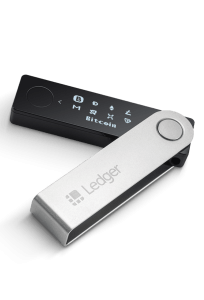
The wallet also comes with CC EAL5+ certified secure chip, which stores your sensitive data, as well as built-in Bluetooth capabilities for wireless cryptocurrency management.
Ledger developed its own non-open source highly-secure operating system called BOLOS. This is the operating system seen on the Nano S and Ledger Blue. BOLOS is stored on the certified secure chip within the Ledger Nano X.
The device’s software is compatible with 64-bit desktop computers (Windows 8+, macOS 10.8+, Linux) or smartphones (iOS 9+ or Android 7+). Nano X offers a wide selection of cryptographic support; check out the complete list here.
Ledger Nano X offers Bluetooth connectivity to its users, making it a great solution for people who want to manage their cryptocurrency on the go. The wallet can connect to the smartphone’s Bluetooth, and its contents can be monitored/controlled through the Ledger Live downloadable mobile app.
The device lets you install up to 100 cryptocurrency apps so you won’t be able to store every single cryptocurrency out of 1100+ that are currently supported by Ledger.
Click here to buy Ledger Nano X.
Coinbox Wallet (mobile, desktop & cloud)

CoinBox is one of the most reliable and secure exchanges in the crypto world, having the broadest selection of crypto coins. In addition to the top 100 cryptocurrencies, including the most popular ones, like Bitcoin, Ethereum, XRP, and others, CoinBox also supports any ERC20 tokens. In total, the number of available coins that users can buy, sell, and exchange now exceeds 1,500.
CoinBox positions itself as a cloud-based mobile and desktop cryptocurrency storage and exchange app with a focus on security, speed, and convenience. This platform creates comfortable conditions for carrying out any operations with cryptocurrency and monitoring the prices of all cryptocurrencies and tokens.
The service is ideal for buying, selling, exchanging, and storing coins without any restrictions and limits. Recently there was an opportunity to sell crypto to your bank account via SEPA directly from your wallet.
In addition to being available on iOS and Android, customers can use it from the browser. Also, it’s the first app in the world that made crypto trading available on Apple Watch.
CoinBox offers its users great customer support. Highly competent and professional staff reply to all the emails instantly and solve issues quickly.
The exchange has a unique affiliate program, which gives the opportunity to receive up to 45% commission on the user’s friends‘ transactions. The user just needs to send his referral code to his friends so that they can use it when signing up.
CoinBox boasts multilingualism as it supports 35 languages.
Trezor Wallet
Trezor is the world’s first Bitcoin hardware wallet. Presented by SatoshiLabs, a Czech Republic-based company, Trezor has a reputation for providing top-notch security, protecting against both physical and virtual theft. Trezor is a small device with an OLED screen. It connects via a USB to your personal computer or phone.
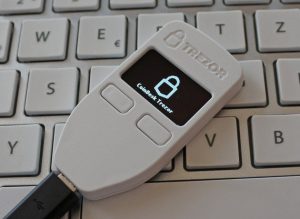
This wallet is the perfect solution for storing a large amount of Bitcoins in order to keep them out of harm’s way, and its fundamental purpose is to store your private keys offline and sign transactions. Furthermore, Trezor supports Chainlink, however, what Trezor lacks in style, it more than makes up in the security department, and it sets the gold standard for crypto security.
The initial setup of Trezor is a bit different from the Nano S. Here is a full guide and review of Trezor hardware wallet.
With Trezor, when you first connect it to your PC, it shows a nine-digit pin code on its OLED screen, and you need to enter the same pin code by clicking on your corresponding PC screen. This code is generated randomly every time you connect to Trezor and makes sure that even if your PC is compromised with malware, your private keys will still be safe with Trezor.
You will be asked to write your 24-word recovery seed after entering the pin. Again, your recovery key is the only way to restore your Bitcoins, which means that you need to keep it.
It’s important to note that an additional passphrase can be added to the 24-word seed, which provides extra protection because anyone who finds someone else’s 24-word seed is free to access the funds. If the optional passphrase is added, then an attacker wouldn’t be able to access funds without both the passphrase and the seed. The passphrase cannot be recovered if it is forgotten.
After that, using Trezor is pretty similar to the Ledger.
Trezor currently supports many cryptocurrencies, including:
- BTC – Bitcoin
- ETH – Ethereum
- ETC – Ethereum Classic
- DASH – Dash
- ZEC – Zcash
- DOGE – Dogecoin
- LTC – Litecoin
- NMC – Namecoin
Trezor is currently available for OS X (version 10.8 and higher), Windows (version 7 and higher), and Linux. It can also be used with Android devices.
It can be used with apps such as Multibit HD, Mycelium, and TREZOR Wallet.
It costs $99 and is available in 3 colors – black, white, and gray.
Pros: Supports additional wallets and altcoins, easy to use and intuitive interface, extremely secure wallet.
Cons: Expensive relative to its competitor.
Lumi Wallet (mobile and web)

Lumi is a beginner-friendly non-custodial, mobile multi-coin wallet that offers support for a wide range of coins, including all major ERC-20 tokens and large and mid-cap cryptocurrencies. Lumi is also a first-of-a-kind wallet supporting collectible tokens (ERC-721) and in-app gaming.
It has both Android and iOS support and is very focused on user and funds safety with PIN, Face ID, and Touch ID protection. The code is also open-source, which is an additional layer of security and trust for Lumi.
As mentioned before, you control your own keys as Lumi has no access to them.
Lumi also requires no KYC or other forms of identity verification. All in all, a great solution for anyone looking for a reliable mobile wallet that can store a lot of different coins.
Exodus Wallet (Desktop)
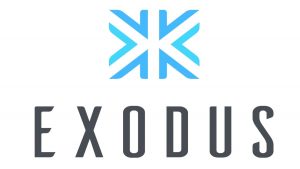
Developed by JP Richardson and Daniel Castagnoli, Exodus is a multi-cryptocurrency product that provides a portfolio + exchange + wallet for your digital assets in one package. Looking to spearhead the movement of returning control of people’s assets into their own hands via blockchain, the wallet has seen support from crypto figureheads like ErikVoorhees, Ricardo Spagni, and Roger Ver.
The wallet supports almost 100 cryptocurrencies (including Zcash) with more assets in the pipeline and is available for download on Windows, Linux, and Mac. Exodus offers some useful features to its users:
- Well-designed, intuitive user interface suitable for beginners
- Multi-asset wallet
- Interesting color-coded, pie chart-like portfolio design
- Quality charting and market tracking tools
- ShapeShift integration
- One-click e-mail restore feature
- 12-word generation phase
- Local data storage
- Community-praised support structure made up of engineers and written/video materials.
Interestingly enough, the wallet themselves published an article called “Top 10 reasons to not use Exodus” in which they decided to reveal their shortcomings for the sake of transparency and honesty. You’ll notice there that there are some weaknesses to the project, namely it being a light wallet, not being 100% open source, not being suitable for professional traders and power users, not being present on mobile platforms, and not offering the ability to exchange crypto into fiat. We can also add its lack of 2FA, fees of 1-3% for transactions and a lack of hardware wallet integration to Exodus’ list of negatives.
Here is a full review of Exodus wallet.
Atomic Wallet (Mobile and Desktop)
Atomic Wallet works as a decentralized network wallet platform for custody-free, immutable, cross-chain, and transparent cryptocurrency trading. The trading takes place on the wallet’s decentralized atomic swap exchange. This exchange lets users operate without the need to register and perform annoying and privacy intruding KYC/AML verifications. It also offers its users the ability to trade their tokens in a more classical manner via integrated ShapeShift/Changelly plug-ins.

Atomic can store over 300 cryptocurrencies (including Zcash) and is currently available for Windows, macOS, Ubuntu, Debian, and Fedora operating systems. Android and iOS versions were also launched recently. The project has some serious names like Konstantin Gladych (co-founder and CEO of Changelly.com) and Charlie Shrem (founding member of the Bitcoin Foundation) behind it. Some of the wallets features include:
- Intuitive and user-friendly interface
- Impressive cryptocurrency support
- Lets you buy crypto with a credit card
- Atomic swaps and ShapeShift/Changelly trading are available
- Custody free with local data storage
- 12-word backup phrase that can be exported
- Flexible Market order margin and fast rate update
- Trading history blockchain storage
- Constant development support
The wallet also has some drawbacks. Besides not supporting shielded addresses for Zcash, it has some general flaws like not being open source and not having multisig/2FA features.
Here is a full review of Atomic Wallet.
Coinomi Wallet (Mobile and Desktop)

Coinomi is a popular wallet solution for people who prefer to store their cryptocurrency on mobile devices. It allows you to securely store, manage and exchange Bitcoin, Ethereum, and more than 500 other blockchain assets. It was launched in 2014 by blockchain technology experts with a “proven track record in Fintech, cryptocurrencies, and entrepreneurship”. Originally available only for iOS and Android, it saw a desktop version released back at the tail end of 2018. It offers the same features as the wallets above and more:
- One-click cross-chain payment processing
- User-friendly
- Best cryptocurrency support of the bunch
- ShapeShift/Changelly integration
- Crypto purchases with fiat
- Local sensitive data storage
- SegWit integration
- Auto-inclusion of forks and airdrops
- No KYC requirements
- Dynamic fees
- Passphrase which can be used to recover your wallet
- Constant development support
It does lack some desirable security features like 2FA or PIN/fingerprint locking.
Jaxx Wallet (Mobile and Desktop Wallet)
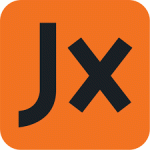
Developed by Anthony Di Iorio, co-founder of Ethereum, Jaxx wallet markets itself as a multi-platform, multi-currency supporting product that, among other things, lets you store your Zcash. Jaxx Liberty is free for download, currently supports 85 cryptocurrencies (with dozens of fiat reference points) and is available for Android, iOS, Mac OS X, Windows, Linux, and Google Chrome (browser extension). It offers some useful features like:
- Unified dashboard: lets you view your assets through a streamlined, simple interface
- Portfolio: lets you track the value of your crypto assets in a simple manner
- News: delivers a stream of the latest blockchain-related news to your device
- Market data: brings price moves, market caps, and trends to your fingertips
- Block explorers: lets you track transaction data of several blockchains
Within the wallet, you’ll find aspects like an industry-standard 12-word generation phrase that is portable to and from other wallets, sensitive information like your backup phrase and private keys not being downloaded by the wallet provider (local storage), AES-256 encryption enhanced by 5000 rounds of pbkdf2 password hashing, Hierarchical Deterministic (HD) wallet support, integration with ShapeShift, QR code supported transactions and more. On the flip side, the wallet has shown not to be the safest storage option in the past, including this vulnerability and its lack of 2-factor authentication.
Here is a full review of Jaxx Wallet.
Top Chainlink wallets – final verdict
We made sure to cover all relevant options for storing LINK tokens. As you can, just like with other crypto coins, storing LINK tokens is best done on hardware wallets like Ledger Nano S, Nano X, or Trezor. If you go for a mobile option, Exodus and Jaxx are great options as well.







